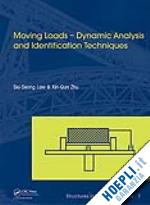The interaction phenomenon is very common between different components of a mechanical system. It is a natural phenomenon and is found with the impact force in aircraft landing; the estimation of degree of ripeness of an apple from impact on a beam; the interaction of the magnetic head of a computer disk leading to miniature development of modern computer; etc. Uncertainty in some of them would lead to inaccurate analysis results on the behavior of the structure. The interaction force is difficult to measure unless instruments have been installed during construction for this purpose. Some of the interaction problems are difficult to quantify due to the lack of thorough knowledge on the interaction behavior. Analytical skills are required to estimate the interaction forces of the mechanical system in order to enable advanced developments in different areas of modern technology. This volume provides a comprehensive treatment on this topic with the vehicle-bridge system for an illustration of the moving load problem. It covers a whole range of topics, including mathematical concepts of the moving load problems with continuous beams and plates, vehicle-bridge interaction dynamics, weigh-in-motion techniques, moving load identification algorithms in the frequency-time domain, in the time domain and in the state space domain, techniques based on the generalized orthogonal function expansion and on the finite element formulation. The methods and algorithms can be implemented for on-line identification of the interaction forces. This book is intended for structural engineers and advanced students who wish to explore the benefit of interaction phenomenon and techniques for identification of such interaction forces. It is also recommended for researchers and decision makers working on the operation and maintenance of major infrastructures and engineering facilities.











